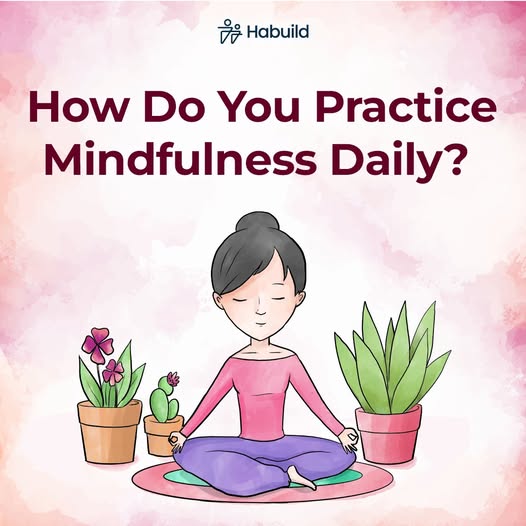Life doesn’t slow down on its own. It speeds up. You wake up to a screen. You eat lunch in between emails. Evenings blur into a scroll of content and half-finished thoughts. Calm doesn’t schedule itself. You have to give it a seat at the table. That’s where mindfulness moments come in. They aren’t grand. They aren’t loud. They’re quiet, small, and steady. And they work.
Building Daily Calm Through Mindfulness Moments


You don’t need incense or long meditations to feel grounded. It can start with a breath. One single pause in the middle of a messy morning. Maybe it’s sipping your coffee without checking your phone. Maybe it’s sitting for two minutes before opening your laptop. That’s it. That’s a mindfulness moment.
The trick is making it part of the routine. Not something extra to do. Something you wrap into what’s already there. Washing the dishes? Feel the warm water. Commuting to work? Watch the trees or the passing buildings. These tiny shifts help anchor your mind. They help your body feel less like it’s sprinting from one thing to the next.
You’re not trying to stop your thoughts. You’re just noticing them without following every single one. It’s like watching clouds instead of chasing them.
Practical Ways to Add Calm into a Busy Routine
Calm doesn’t have to mean stillness. You can be moving and still feel grounded. Take a short walk without music. Or stretch your back while waiting for your lunch to heat up. This isn’t about rituals. It’s about rhythm.
One easy way to add a moment of calm is to name how you feel. Just one word. Tired. Frustrated. Hopeful. Not to judge it. Only to see it. When you name it, you stop wrestling with it. You make space for it without letting it take over.
Try stacking a mindfulness moment onto something you already do every day. Before brushing your teeth. After closing your laptop. Right before sleep. It doesn’t have to take long. But it should be consistent. That’s how it starts to stick.
How Mindfulness Practices Help Reduce Stress and Improve Focus
We’re all juggling too much. It’s easy to feel like your mind is full but your attention is scattered. Mindfulness helps by giving your brain something simple to hold on to. Like your breath. Or the way your feet feel on the ground.
When you slow down, on purpose, it helps reset your nervous system. That means fewer stress hormones running wild. Better sleep. Fewer headaches. More clarity when you’re trying to think straight.
Over time, these small habits lead to better focus. You start noticing when your attention drifts. You bring it back faster. And even when you don’t, you forgive yourself more easily. Which helps too.
Creating a Sustainable Mindfulness Routine That Fits Your Life
- Start with one moment.
- Pick a time that repeats every day.
- Attach your mindfulness practice to that.
- Don’t try to overhaul everything.
- Just add one thing that feels doable.
- A short pause before dinner.
- A breath before answering a call.
- Track it if you need to. But don’t obsess.
- This isn’t about being perfect. It’s about coming back again and again. Even if you missed it yesterday.
- Talk about it with someone. Let a friend or family member know what you’re trying. It makes it real. And it helps when someone else is trying too. Shared intention makes a habit easier to keep.
- Mindfulness doesn’t erase stress. But it gives you better footing when it shows up.
Final Thoughts
You don’t need a quiet cabin or an expensive retreat to feel more calm. You need intention. You need tiny moments that fit your life. And you need to start where you are. With a pause. With a breath. With the smallest break in the noise. That’s how calm begins. And how it grows.
